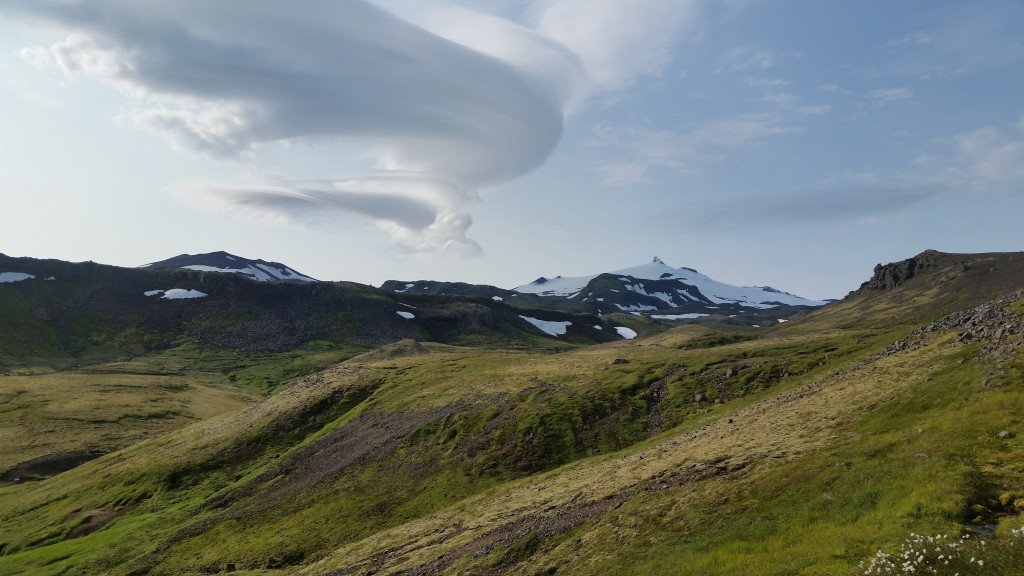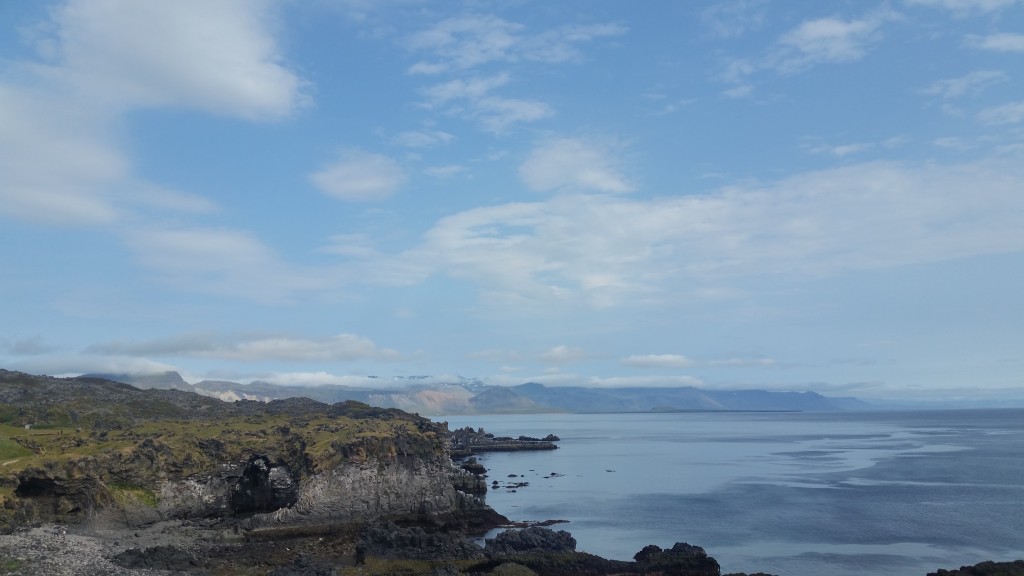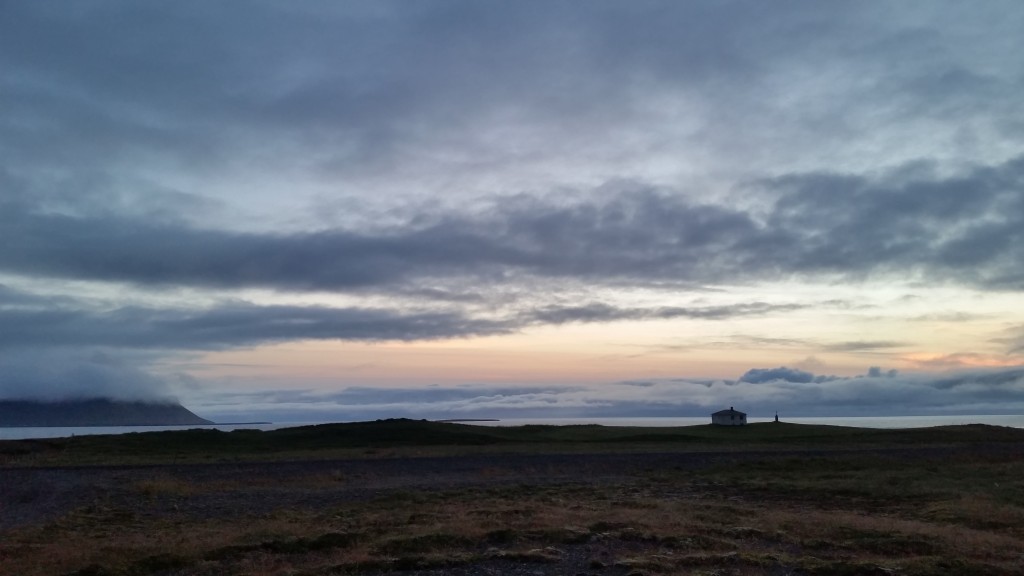On my first visit to Iceland in the summer of 2014, an Australian tourist caught me admiring the flat, knurly topography. She remarked with a smile, “It’s just like the moon, isn’t it?” We were on a bus headed for Reykjavík from Iceland’s international airport, Keflavik, which was once a NATO military base. It was her fifth visit in two years.
Then, as if to emphasize the outer space character of Iceland’s southwest, she concluded that “There’s no other nature like Iceland.” In describing Iceland’s landmarks, the Australian invoked similar sentiments uttered by Danish, Norwegian, and British visitors to the island throughout the 19th century who described Iceland’s geography as a fascinating remnant of prehistoric Earth.
Icelandic identity has always been closely tied with its natural landscapes. But how exactly are they entangled? What sort of claims does Icelandic nationality put on its natural landscapes? In a nation where hot springs are both sources of revenue from tourists and of geothermal energy, these questions motivate how Icelandic identity is being negotiated and represented to foreign visitors.
The country’s aurora, craters, hot springs, and lava fields frequently light up advertisements in Boston’s subway system every year, beckoning tourists to experience its unique nature. The Australian woman and I formed part of this burgeoning trend. Along with several dozen other people on the bus, we were tourists visiting Iceland. The number of tourists arriving at Keflavik airport this year has already surpassed one million, almost 20% higher than the number of tourists during the entire year of 2014. Concerns about environmental impact begin to leap and lurk. At the end of 2014, these concerns converged on a controversial proposal in the Althingi, the Icelandic parliament, to impose a “Nature Pass,” a charge on visitors which the government argues will subsidize building facilities to minimize the negative impact of human traffic on Icelandic nature.
The bill faced heated opposition from tour operators and environmentalists alike. Tour companies questioned how such a requirement would be enforced and whether the administrative costs outweighed the revenues of such a levy.
Some of the critics supported a tax on accommodation instead, voicing a concern that the presence of “inspectors undermines Iceland as a place where one can connect with nature without the intervention of other human beings.” A representative of an environmental NGO echoed this sentiment, claiming that the proposed legislation violates the “ancient right of people to visit nature.”
It quickly became clear that critics of the bill were not just highlighting practical difficulties that come with enforcement but also the potential violation of a right to nature that forms part of Icelandic culture.
What is at stake for various groups affected by the controversial bill is thus more than just the issue of environmental conservation. The bill threatened to unravel what critics believed were inseparable in Iceland: nature and nation.
The lava land has not always been seductive.
Prior to the 19th century, Iceland’s desolate landscape was reviled. Karen Oslund’s work on Icelandic cultural imaginaries points to reports from the 15th and 16th centuries where Iceland was described as “an isolated place remote from the centers of civilization…shrouded in clouds of poisonous smoke, the inhabitants…doomed souls, begging for relief.”
Indeed, for many, the knurly terrain was evidence of instability and earthquakes, a sign of an island teetering on the edge of another glacial or volcanic upheaval. In 1783, as if to confirm these views, a series of earthquakes and lava streams rocked the island. It was not until the 1800s that visitors began to describe Iceland’s nature as extraordinary, inspired by majestic painted panoramas and ethnological theories that European ancestral ways of life underpinned Icelandic society.
Iceland quickly became a subject of scientific, religious, and legendary speculation and adventure and began to attract hoards of tourists. Oslund shows that a theme that bundles these intrepid explorers together is the desire to see Icelandic nature, a nature described as “unusual,” shaped by the forces of “fire and ice.” For centuries, Iceland has attracted those interested in mythology, linguistics, natural history, and geology. Scandinavian explorers in the latter part of the 19th century described Iceland as a time-capsule which preserved European medieval ways of life. Geologists from Britain claimed that Iceland’s volcanic landscape illustrated how Earth must have looked like in prehistoric times.
But there is a certain extent to which these seductive ideas of Icelandic nature are a product of changing economic and political circumstances. The tourism industry in Iceland began to grow several years after the devastating economic collapse of 2008. Tourism was seen as a potential way out of the crisis and is poised to now become the country’s largest export sector. Icelandic nature was marketed through a well-managed public and private campaign that included aggressive marketing strategies and incorporating advice from the Boston Consulting Group.
With faster and cheaper modes of travel, a vigorous advertising campaign, and a global interest in ecotourism, the very features that lured British and Scandinavian travelers across the North Atlantic to Iceland now draw travelers like me. In 2015, Iceland’s barren and alien landscape continues to seduce.
I traveled back to Iceland six months later for 2015 New Year’s Eve celebrations. Eruptions of light fanned the sky the moment night took over from dusk, which was at 3.30pm. The morning was spent buying fireworks named after Nordic gods and goddesses. Jon, my friend and host, settled for a firework named Fenrir, the god Loki’s pet wolf monster. We then prepared food for the New Year’s Eve dinner, admired the roasting lamb in the oven, frequently taking smoke breaks out on the freezing porch.
White snow on the hills glimmered in red, green, and yellow as the sound of something like distant gunshots rang in the air. After dinner, when everyone had settled down to digest, there was a sudden silence in the sky. It was time for the annual ridicule, or Áramótaskaup, a television program satirizing the events of the year; my host tells me that almost everyone in Iceland watches it and would discuss the program’s merits in the following weeks.
One Áramótaskaup scene showed an Icelandic family decked out in a remote location, enjoying the snowy mountainous panorama. The scene then shows Beyoncé and Jay Z hiking. The father of the family notices them but the thrifty grandmother is not allowed to look at them because she had refused to pay for the nature pass. There was laughter in the room. The scene parodied how an act of enjoying nature was being regulated. In the newspapers and online, the Nature Pass received similar forms of ridicule.
Article 33 of the 2011 draft Constitution states that “Iceland’s nature is the foundation of life in the country. Everyone is under the obligation to respect it and protect it. Everyone shall by law be ensured the right to a healthy environment, fresh water, clean air and unspoiled nature.” It is this Article that is being invoked by those who oppose the Nature Pass on the grounds that it violates the people’s right to visit nature.
And although this draft constitution was never enacted, a 1928 law that prescribed the establishment of Iceland’s most famous national park, Thingvellir, contains a similar sentiment. It states that “The protected land shall be…the perpetual property of the nation.”
The entanglement between nature and nation extends beyond Iceland’s constitutional reforms. In a café tucked away from the hustle of Laugavegur, I asked Eyjólfur, an artist living in Reykjavík, about what he thinks of Icelandic nature. Eyjólfur also goes by “Aid,” which is how he signs off on his art. “Icelandic nature is food,” he said without a moment’s hesitation.
I pressed for an explanation. “As an island, we are always thinking about where our food comes from. Nature in Iceland, for me, is about food and making food in a way so that there is always food in the future,” he explained. A bowl of tomato soup and a slice of really dry bread arrived at our table. He took a quick sip of the soup, smiled, and then said, “That’s why we are always talking about fish. That’s why there were the cod wars.”
The cod wars were a series of confrontations between Iceland and the United Kingdom in the 60s and 70s over fishing rights off the Icelandic coast. Although there were no casualties or weapons, fishermen on both sides would sometimes find their nets cut off.
Fishing and whaling in Iceland are touchstones for nature-nation entanglements. When Keiko, the orca who starred in Free Willy was returned to Iceland in 1998 as part of an environmental campaign, pro-whaling groups characterized the event as a publicity stunt. Critics said that it was an attempt by environmentalists seeking to eliminate the livelihood of Icelandic whalers.
The whaling industry is a controversial topic in Iceland, straddling environmental, political, and economic issues. The assertion to whaling in Iceland is sometimes contentiously linked to the assertion of indigenous identity, where whaling is argued to be a crucial part of Iceland’s “native” way of life.
Most of Iceland’s whale hunting today is carried out by large whaling companies that export their catch to Japan. Over the past forty years, Iceland’s membership in and compliance with the International Whaling Commission moratorium on whale hunting have wavered. The return of Keiko the orca then, as others have argued elsewhere, could be interpreted as an event about Iceland’s negotiation with conservationist and national interests.
“Nobody likes it. It’s not going to pass,” my Icelandic friend Jon wrote in a Facebook message. In April, the Industrial Affairs Committee in the Ministry of Industry withdrew the bill and said that it would look for alternative ways to raise money to maintain Iceland’s pristine nature.
On the way to the airport, I noticed how many more trees there were in Reykjavík than elsewhere. Trees nicely capture the nature-nation-native nexus. The Iceland Forestry Service (IFS) website welcome page quickly challenges the perception of Iceland as treeless, arguing that Iceland’s climate is very hospitable for a wide variety of trees. It is past human overuse, they conclude, that gives Iceland its “moon-like” look.
Ecologists and conservationists often describe their work in scientific terms, such as ecosystems, trophic cascades, and food chains. But if there’s one thing we can learn from the Nature Pass controversy, it is that environmental claims may also be made by an appeal to national narratives.
Efforts and arguments for reforestation and rewilding in places like Iceland, the Scottish Highlands, and the American prairies continue to grow. These efforts attract enthusiastic support and court critics. The verdict is still out but one thing has been clear: it is not just the language of ecology that mediates these disputes about nature, but also that of national identity.






